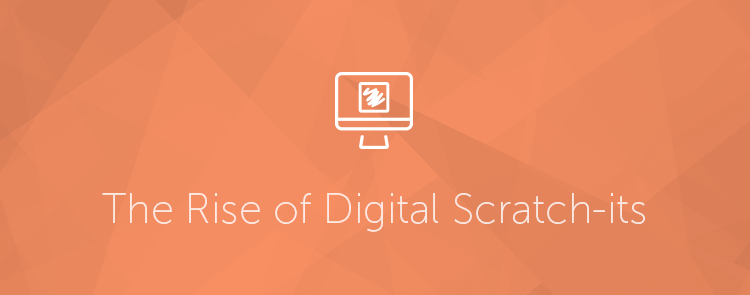IT BEGAN THE WAY IT SO OFTEN BEGINS, with an eruption of curiosity, itching and excitement, his eyes suddenly alive, racing, brimming, inhabited. An abundance of activity in his hand began. And so it started.
This is not what the Sixty-five-year-old marketing executive from Austin expected to happen to him on a quick email break. But there it was and there he was, in a rampant race to reveal the glowing image embedded on his screen.
10 years ago digital scratch cards did not exist. Subsequent strides and improvement in technology have allowed the physical world and digital world to merge.
Scratch cards that were once reserved solely for gambling, flatly displayed in the front of seedy convenient stores are beginning to appear in a new form, elegantly present within our emails, over our banner ads, and throughout our favorite social media sites. Today these cards can be used for publicity, promotions, and email performance.
So what are five reasons “digital scratch cards”, “scratch offs”, or “scratch and wins” work so darn well?
Curiosity
Curiosity is the starting point for every sale. It’s simple. Those who are curious will want to engage, while those who are not curious, won’t. Piquing your potential customers interest is the key to building solid engagement.
Email users are bombarded with hundreds of email messages every day. Therefore they prioritize based on their level of interest. A prospect who becomes curious about an email message you have sent is much more likely to engage than someone who isn’t curious.
How do you make prospective customers curious?
- Subject Lines
- Story Telling
- Reveal Based Marketing
FOMO
Fomo, or fear of missing out, is a “form of social anxiety,” says psychiatrist Gail Saltz. Our social society is bent on exhausting our options before choosing. The idea of not knowing what we can have, compels us to act so that we are not left with a what could have been? Digital Scratch cards encapsulate this principle brilliantly by veiling their message or deal.
Near Miss Theory
A near miss is anytime a contestant enters to win, but does not by a slight margin. Instead of feeling like a loser it instills encouragement that they were only off slightly, or oh so close. According to a study ran by Mitchell Schare a psychology professor at Hofstra University, the near miss theory had a “significant effect on the number of trials and a increased persistence”. Ultimately the study found that near misses encourage future play in gaming.
Interaction
Digital scratch cards are where digital meets physical. So much time online is spent staring at a screen. Internet users are accustomed to repetitively being fed messages to their eyes, but what if you could involve their other senses like touch? Interactive content in the form of digital scratchers gives businesses a different way to communicate their messaging. This leads to more customers actively engaging with your content.
Fun
Digital scratch cards are an effective form of gamification. Quick, easy, and motivating, they provide instant gratification for participants who win, and motivation through the near miss theory for those who don’t. Everyone loves games.
If leveraging the psychological principles of digital scratch cards in the sales process is new to you review our guide to reveal based marketing and learn all the ways you can use this new approach to succeed.

Pingback: Woolrich Italia Sito Ufficiale Vendite()